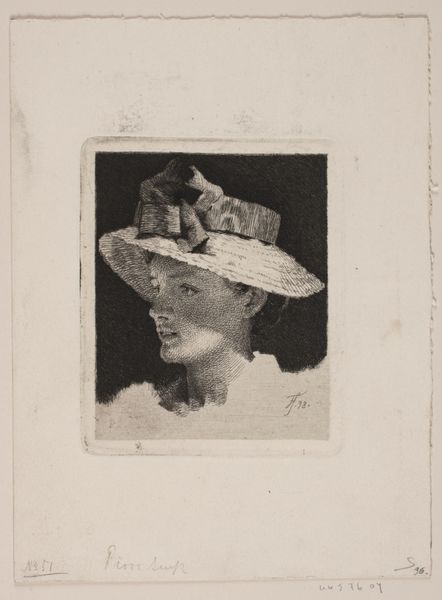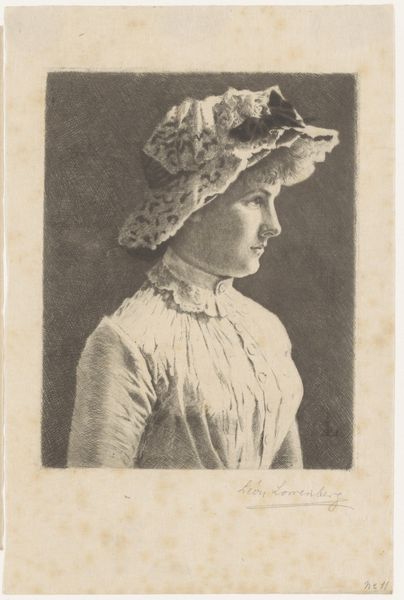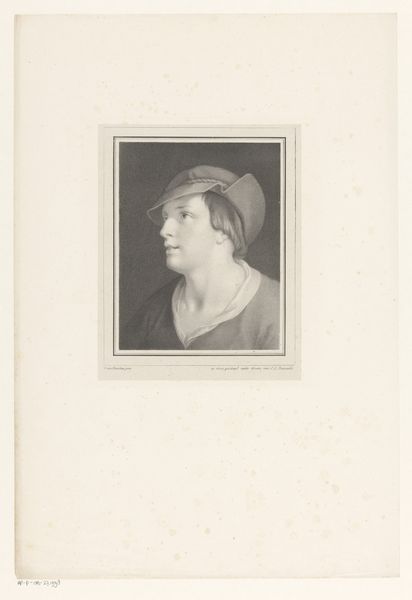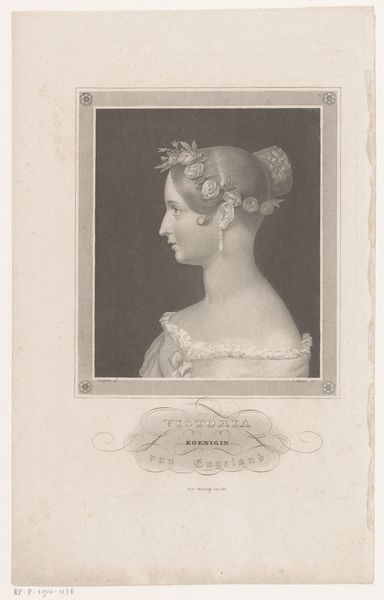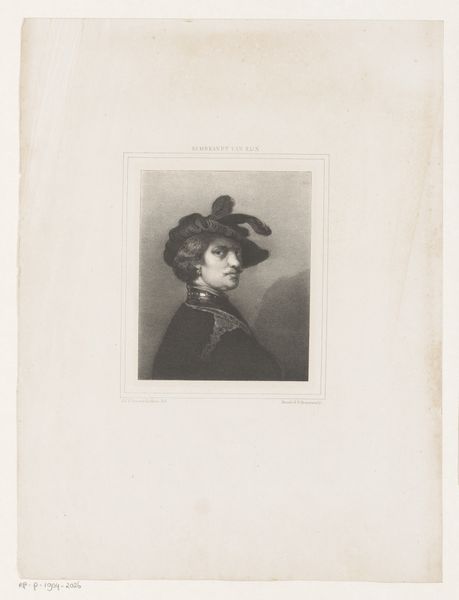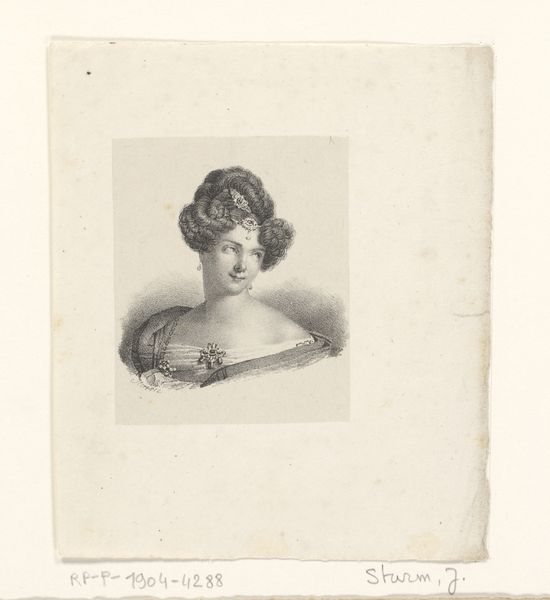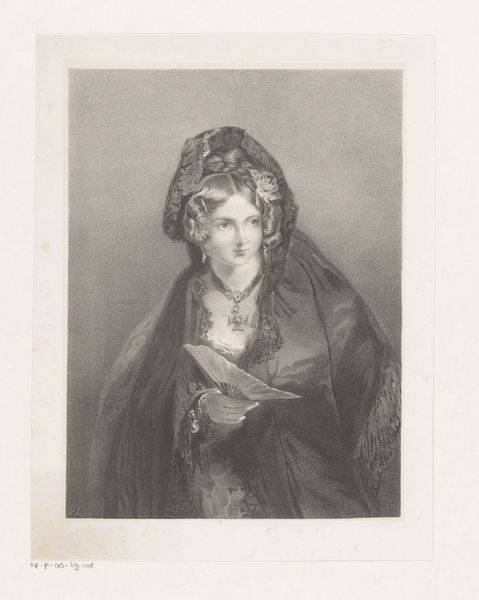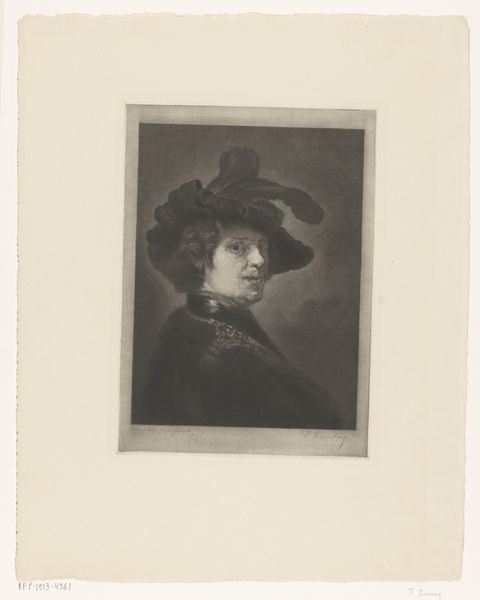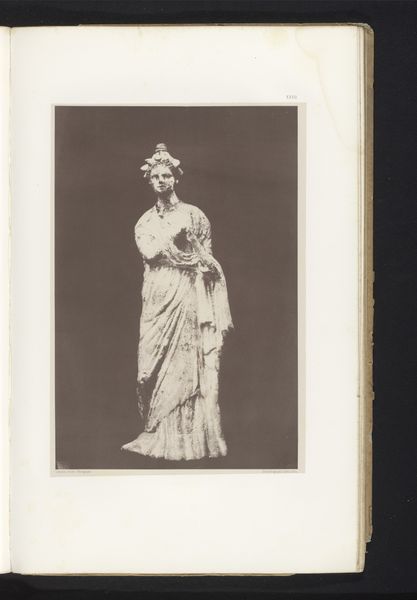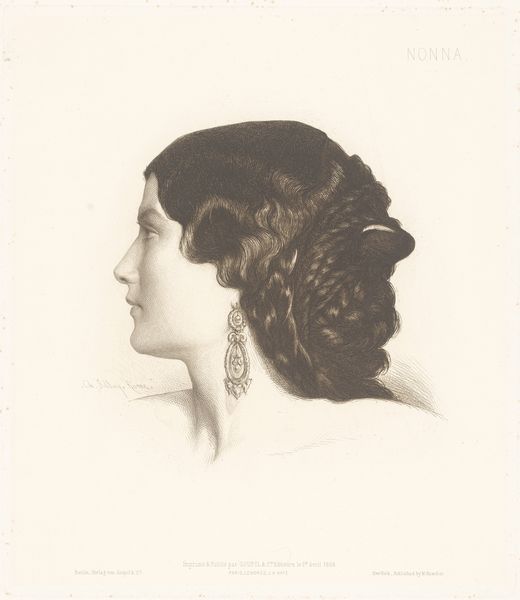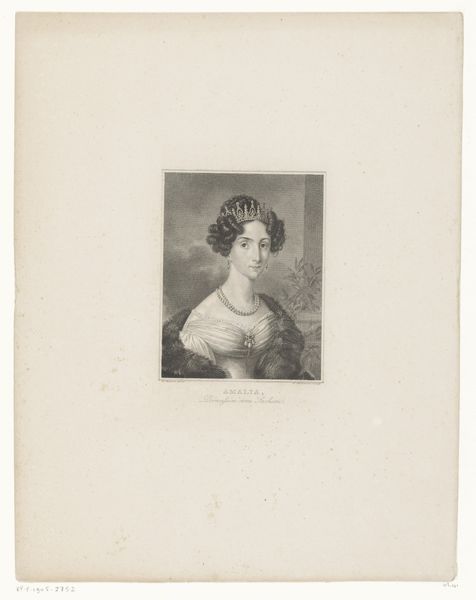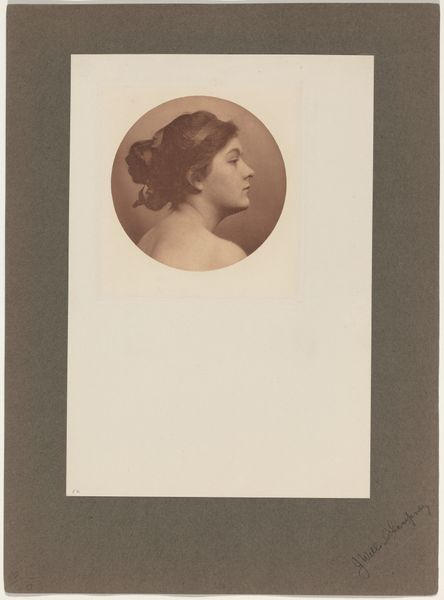
Etalagepop met geborduurde hoed no. 39 van de Wiener Werkstätte 1920 - 1930
0:00
0:00
photography
#
portrait
#
art-deco
#
photography
Dimensions: height 109 mm, width 80 mm
Copyright: Rijks Museum: Open Domain
Curator: My first impression is one of elegant restraint. The image feels both formal and intimate, wouldn't you agree? Editor: Indeed. We're looking at "Etalagepop met geborduurde hoed no. 39 van de Wiener Werkstätte", which translates to "Mannequin with embroidered hat no. 39 from the Vienna Workshop." It’s an anonymous photograph, dating roughly between 1920 and 1930, now held here at the Rijksmuseum. Curator: The detail in the embroidery is remarkable. Look at the intricate geometric patterns; they create a compelling interplay of light and shadow across the surface of the hat. It completely draws the eye. Editor: Absolutely. This piece speaks volumes about the Wiener Werkstätte's commitment to craftsmanship and their impact on early 20th-century design. They sought to bring art into everyday life, breaking down barriers between fine art and decorative arts. The fact it’s a mannequin hints at a certain role of women at that period: a showpiece. Curator: Considering its photographic quality, the shallow depth of field also enhances the almost sculptural quality of the piece, foregrounding texture against soft grayscale. I wonder, were they focusing the light on these textures for that purpose? Editor: I think you may be right about the light. It might have been on display somewhere in a showroom. The choice of using a mannequin in portrait format—emphasizes the commodification of fashion and beauty at the time. But you have a good point on the depth of field! It forces a tight engagement with textures over the subject’s humanity. Curator: Fascinating how these formal choices resonate even now. Its design transcends time. Editor: Agreed. The piece subtly explores questions of art, commerce, and representation—making it deeply resonant. Curator: The close, analytical work we can perform here shows just how the photograph's composition shapes our perception. Editor: And through its context, how social currents were shaping art production! It offers us a look into the complex, ever-changing relationship between art, culture, and design, especially regarding early 20th century feminine expectation and fashion trends.
Comments
No comments
Be the first to comment and join the conversation on the ultimate creative platform.
